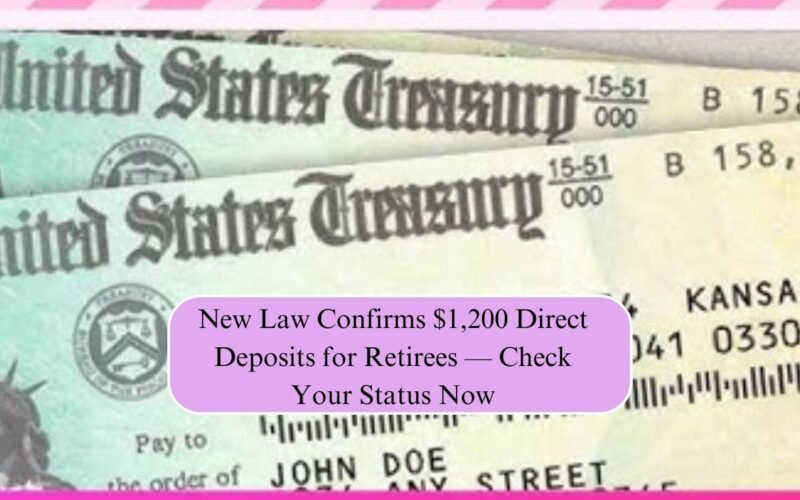A new federal update has confirmed that millions of retirees across the United States will soon receive $1,200 direct deposits under recently approved legislation. The law aims to provide additional financial relief for senior citizens facing higher living costs, inflation, and medical expenses. Eligible retirees will begin receiving payments through direct deposit in the coming weeks, with the Social Security Administration (SSA) coordinating the rollout. Here’s everything you need to know about who qualifies, how to check your payment status, and when to expect the deposit.
What the New Law Means for Retirees
The newly approved payment initiative provides a $1,200 one-time deposit for eligible retirees receiving Social Security or Supplemental Security Income (SSI). It is designed to support those living on fixed incomes who have been affected by rising costs of healthcare, groceries, and housing. The program also extends to certain veterans and disability benefit recipients under related SSA programs. This legislation follows recent efforts to stabilize retirement benefits and ensure older Americans maintain financial security in an uncertain economy.
Who Qualifies for the $1,200 Direct Deposit
Eligibility for the $1,200 payment depends on income level, benefit type, and tax filing status. Here’s a breakdown of who may qualify:
- Retirees aged 62 or older currently receiving Social Security benefits
- Individuals receiving Supplemental Security Income (SSI) or Social Security Disability Insurance (SSDI)
- Retired veterans with qualifying federal benefits under SSA or VA systems
- Low- to moderate-income seniors whose annual income meets federal thresholds
The IRS and SSA will work together to identify eligible recipients automatically. In most cases, retirees will not need to apply or take any extra steps to receive the deposit.
When Will the $1,200 Deposits Arrive?
Direct deposits are expected to begin this month and continue through the following payment cycles. The funds will be distributed based on the recipient’s birth date, following the standard SSA payment calendar. Seniors using direct deposit will receive the payment faster than those relying on mailed paper checks. For most eligible retirees, the payment will appear in their bank accounts alongside their regular Social Security benefits.
How to Check Your Payment Status
Retirees can check their payment status by logging into their my Social Security account or contacting their local SSA office. While most payments will be processed automatically, retirees should ensure their banking information and mailing address are up to date to prevent delays. If a payment does not arrive within the expected timeframe, beneficiaries may be asked to verify their eligibility or update payment information with the SSA.
Why This Law Matters for Seniors
This one-time $1,200 direct deposit offers significant relief to retirees navigating the challenges of rising costs. With inflation continuing to impact essentials like rent, utilities, and healthcare, the extra payment is expected to provide short-term financial stability. Seniors are encouraged to review their accounts carefully and stay alert for notifications from the SSA or IRS about upcoming deposits.
FAQs
1. Who qualifies for the $1,200 direct deposit?
Retirees aged 62 or older who receive Social Security, SSI, or SSDI benefits are eligible. Some veterans and low-income seniors may also qualify.
2. Do I need to apply for the payment?
No. The payment will be automatically sent to eligible retirees using the same method they currently receive Social Security benefits.
3. When will I receive my $1,200 deposit?
Payments are expected to begin this month, following the standard SSA payment schedule based on birth dates.
4. How will the money be sent?
Most retirees will receive the payment via direct deposit. Paper checks will be mailed to those who are not enrolled in electronic payments.
5. Is this a one-time payment or a recurring benefit?
This $1,200 payment is a one-time relief deposit approved under new legislation and is not part of the ongoing monthly benefits.

